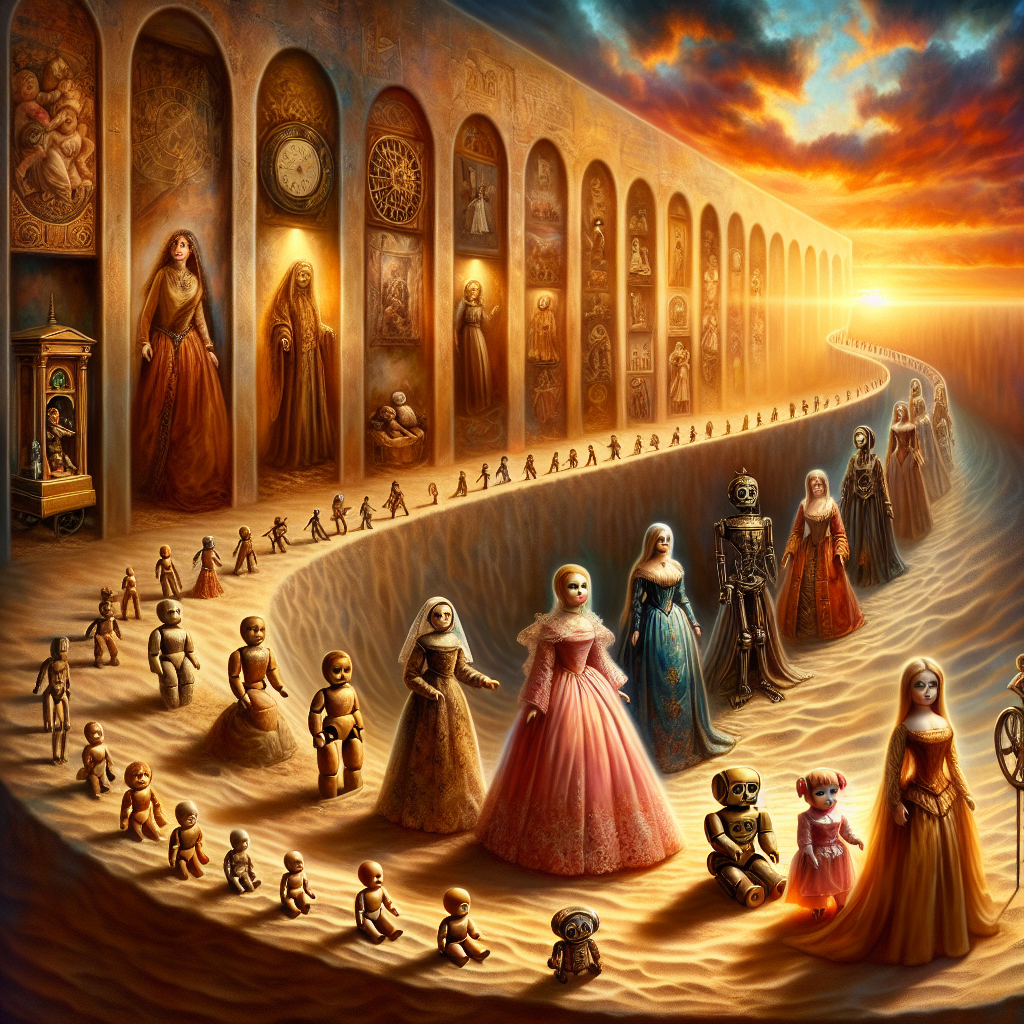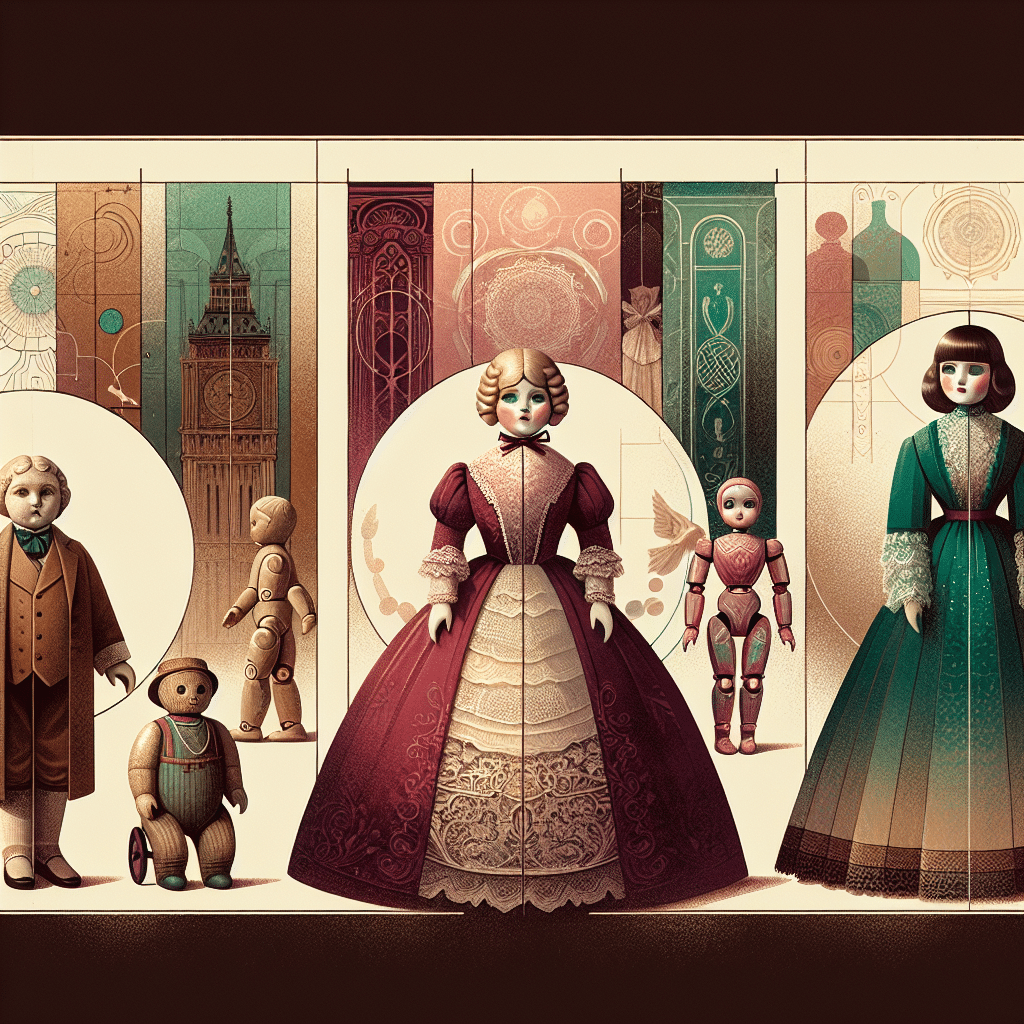The History of Dolls: From Ancient to Modern
Dolls have been a cherished part of human history, captivating hearts and igniting imaginations across cultures and generations. From simple clay figurines to sophisticated, lifelike creations, dolls have evolved significantly over time. Join me on a fascinating journey through the history of dolls, from ancient times to the modern era.
Table of Contents
1. Introduction to the World of Dolls
2. Ancient Dolls: The Early Beginnings
3. The Evolution of Dolls in the Middle Ages
4. Dolls in the Renaissance and Enlightenment Periods
5. The Rise of Modern Dolls
6. Technological Innovations in Doll Manufacturing
7. Conclusion: The Timeless Appeal of Dolls
8. FAQs: Unveiling Doll Mysteries

Introduction to the World of Dolls
Dolls are more than just playthings; they are a window into the past, reflecting cultural, social, and technological changes throughout history. Whether used for religious rituals, educational tools, or simply for play, dolls have held a significant place in human societies. Let’s explore how these beloved figures have transformed over the centuries.
Ancient Dolls: The Early Beginnings
Our journey begins thousands of years ago when dolls first appeared in ancient civilizations. The earliest dolls were crafted from natural materials such as wood, clay, stone, and bone. In ancient Egypt, dolls were often buried with the deceased as companions for the afterlife. These dolls were simplistic, yet they held profound spiritual significance.
Meanwhile, in ancient Greece and Rome, dolls took on a more playful role. Young girls would often dedicate their dolls to goddesses as a rite of passage into adulthood, marking their transition from childhood to womanhood. The craftsmanship of these dolls was impressive, with movable limbs and elaborate clothing.
The Evolution of Dolls in the Middle Ages
As we move into the Middle Ages, dolls began to take on new forms and functions. In Europe, dolls were predominantly made from wood and were often used as teaching tools to educate children about adult roles and responsibilities. These medieval dolls were not just toys; they were integral in reinforcing societal norms and values.
Interestingly, during this period, dolls also became popular in religious practices, with figures representing saints being used in church rituals. These dolls served both devotional and educational purposes, illustrating the dual role dolls played in society.
Dolls in the Renaissance and Enlightenment Periods
The Renaissance era marked a significant shift in doll design and production. With the rise of fashion, dolls became miniature models of the latest trends, influencing the style and attire of the upper classes. Known as “fashion dolls,” these figures were meticulously crafted and dressed in the finest fabrics, showcasing the opulence of the time.
During the Enlightenment, dolls continued to evolve, becoming more lifelike and detailed. Doll manufacturers began experimenting with new materials such as wax and porcelain, allowing for more realistic and expressive facial features. This period also saw the introduction of mechanical dolls, adding an element of wonder and innovation.
The Rise of Modern Dolls
The 19th and 20th centuries witnessed a dramatic transformation in the doll industry, driven by advancements in technology and changes in societal attitudes. The introduction of celluloid and plastic revolutionized doll manufacturing, making them more affordable and accessible to the masses. This era saw the birth of iconic dolls like Barbie, who quickly became a cultural phenomenon.
Barbie, introduced in 1959, represented a shift in the portrayal of women, offering young girls a new model of independence and possibility. Her success paved the way for a diverse range of dolls representing various ethnicities, professions, and lifestyles, reflecting the growing emphasis on inclusivity and representation.
Technological Innovations in Doll Manufacturing
Today, the world of dolls continues to be shaped by technological advancements. From dolls that can talk and interact to those that are fully customizable, the possibilities seem endless. 3D printing technology has also opened new avenues for creativity, allowing for personalized and unique doll designs.
Moreover, the rise of digital dolls and virtual play spaces highlights the integration of technology into children’s playtime, offering new ways to engage and learn. Despite these innovations, the essence of dolls remains unchanged: they are companions, storytellers, and a bridge to the world of imagination.
Conclusion: The Timeless Appeal of Dolls
From ancient relics to cutting-edge creations, dolls have woven themselves into the fabric of human culture. They reflect our hopes, dreams, and the ever-evolving nature of society. Whether cherished as childhood friends or admired as collectibles, dolls continue to captivate people of all ages, proving their timeless appeal.
FAQs: Unveiling Doll Mysteries
Q1: What were the first dolls made of?
A: The earliest dolls were made from natural materials such as wood, clay, stone, and bone. These materials were easily accessible and allowed for simple yet meaningful designs.
Q2: Why are dolls important in history?
A: Dolls have played various roles throughout history, from religious and educational tools to symbols of fashion and culture. They provide insight into societal norms and technological advancements of different eras.
Q3: How has technology impacted doll manufacturing?
A: Technology has enabled the production of more affordable and diverse dolls, incorporating features such as speech, movement, and customization. It has also introduced digital dolls and virtual play experiences.
Q4: What is the significance of Barbie in doll history?
A: Barbie revolutionized the doll industry by offering a new model of femininity and independence. She has evolved over the decades to represent diversity and inclusivity, influencing cultural perceptions of beauty and aspiration.
In conclusion, the history of dolls is a rich tapestry woven with cultural, social, and technological threads. Whether you’re a collector, a parent, or simply a curious soul, understanding this history provides a deeper appreciation for these timeless companions. 🧸
